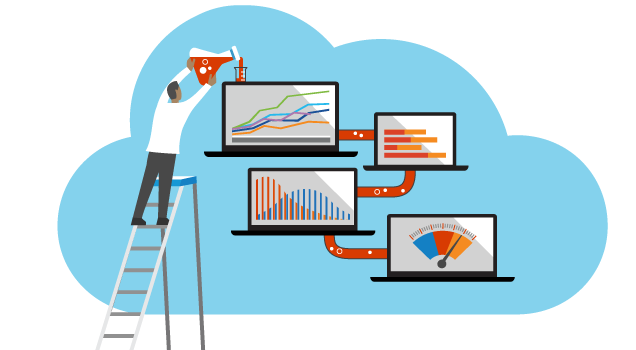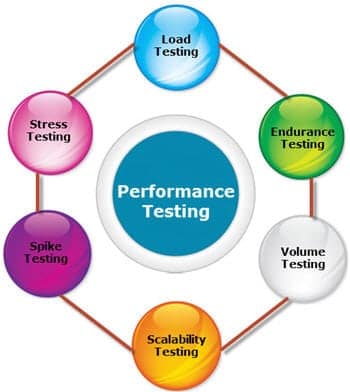Should You Shift From Performance Testing to Performance Engineering?
What's the difference?
Join the DZone community and get the full member experience.
Join For Free
As the world becomes more decidedly digital, the demand for apps has skyrocketed like never before. "There's an app for that" is not just a popular saying. It is an accurate depiction of how people live their lives.
Since the world is mostly glued to mobile devices, everything must be accessible through an app. Every app must be flawless. Speed, easy usage, perfect data security, and visual appeal are just the basic expectations of every app user. Flounder on any one of them, and your app risks being deleted.
Naturally, thorough mobile app testing has become more relevant than ever before. Shorter deadlines and updates being rolled out continuously out to ensure exceptional user experience, developers and QAs often find themselves racing against time. In such scenarios, it is easy to miss anomalies that may affect an app's speed, stability, or responsiveness.
Ensuring performance and functional excellence in such short timelines can seem difficult, but more companies and testers are shifting to a newer development strategy to address this. They are moving from Performing Testing to Performance Engineering.
You may also like: Myths on Performance Engineering and Performance Testing
Difference Between Performance Testing and Performance Engineering
To understand why the shift is necessary, we need to clarify how the two strategies are different.
Generally, performance testers are experts at testing an app for flawed functioning. They know how to set up environments in which the app may break or show glitches. They are experts with monitoring and analyzing performance across numerous application types. Performance testers are the reason developers know what to fix in an app, or even what can potentially go wrong.

Source - Softwaretestinghelp
Performance engineers, on the other hand, don't just identify a bug. They analyze the code to discover the root cause of the bug's occurrence, brainstorm possible solutions, and optimize to resolve the issue. Their task doesn't end with reporting a bug; they must get rid of it and ensure that the app always meets its performance standards.

Key Essentially, performance engineering functions end-to-end throughout the software development cycle. Performance testers usually come into the picture at the end of the cycle.
Why Shift From Performance Testing to Performance Engineering?
While no app can be created without performance testing, it limits the testers. They only test an app to find errors but are not involved in correcting the error. A lot of back and forth occurs, with the tester sending reports to developers who find a fix and send the code back for another round of testing. The cycle is somewhat inefficient and time-consuming.
Much like the Agile methodology, performance engineering seeks to deliver bug-free applications as fast as possible through collaboration among all sections of a development team. It operates, from the very beginning, with previously decided performance metrics in mind. This also lets engineers detect potential issues as early as possible.
If bugs appear or performance standards are not met, a performance engineering approach carries out optimization and multiple levels — OS, software, network, hardware. There is a constant collaboration between teams so that no one works in a silo, and everyone is aware of the app's overall state of functioning at any time.
Fundamentally, a performance engineer has to visualize the app's ideal performance and quantify them into specific metrics. This helps team members know exactly what they are work towards and makes it easier to identify any problems.
How to Shift?
Moving to a performance engineering ecosystem does not have to be complicated if you have laid the necessary groundwork.
Build the Right Team
In performance engineering teams, business and technology departments work together. The people to include would be those who are comfortable in conversations about all aspects of the app — from development to market value. They should also be eager to collaborate since all goals are set by the entire team together.
Incorporate Automation
Since a performance engineering approach takes a bird's eye view of an app in development, it is essential to automate testing as far as possible. After every change to the change, the app must be tested in its entirety to make sure the change has been integrated.
Automated app testing lets engineers write test cases for a large number of the app’s functions, while manually testing newer updates to make sure they are not disrupting the app’s overall functionality. Consider utilizing testing platforms that allow you to run automated tests remotely over the cloud.
Before starting development, a performance engineering team must decide upon automation tools to save time, effort, and speed up releases.
Choose the Right Metrics
A performance engineering team must have a core set of metrics in terms of app performance and user experience. The cross-functional structure of the team means that every individual must have deep clarity on the final targets. This ensures that every team member knows what their efforts are directed towards.
Automation can also play a part here, especially if the team is large. If possible, try implementing automated reporting from different teams on a common dashboard. This will enable easy measurement of goals. You can also set standard baselines or the minimum that each individual/team should accomplish within giving timelines.
Don’t forget to look at indirect metrics within the business that indicate results related to customer response, brand value, revenue, and market positioning.
Built-in Telemetry
Integrating the telemetry and its data makes the team’s operational culture more performance engineering-centric. Ask yourself: How am I capturing the APM (application performance monitoring) data from production? What about pre-production? Can you examine these results and gain a better understanding of your users, systems, and transactions?
Get your IT operations manager involved in order to broaden your network, build more bridges between people, and reduce production incidents. Figure out integrations for your existing technology that facilitates a more collaborative work culture.
Start Early On
The shift to performance engineering must take place at the beginning of a new project. When the team begins to view performance as a whole early in the development lifecycle, the final product is likely to be quicker, more stable, and efficient. Of course, it is possible to make the shift later in the process, especially in the redesign/reengineering phase that aims to develop the new iteration of a product.
Final Thoughts
The shift from performance testing to performance engineering is a shift to the future of mobile app testing and development. The sooner you can make the shift, the better will you be positioned to gain a serious competitive advantage in the mobile app market.
Further Reading
Opinions expressed by DZone contributors are their own.

Comments